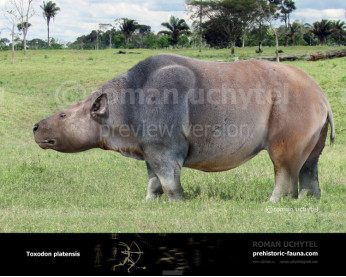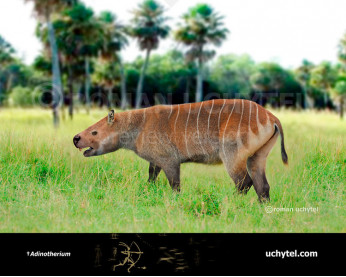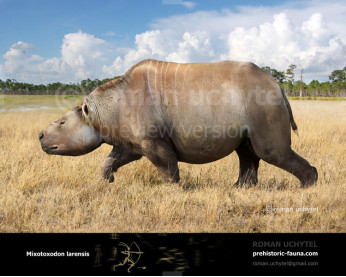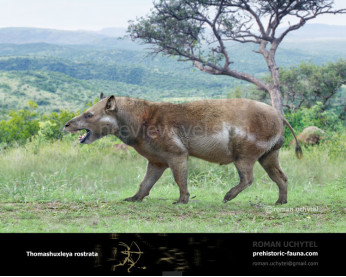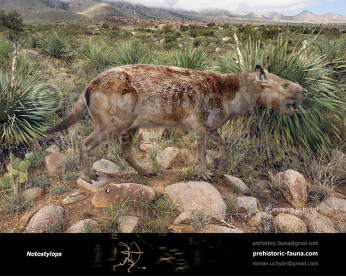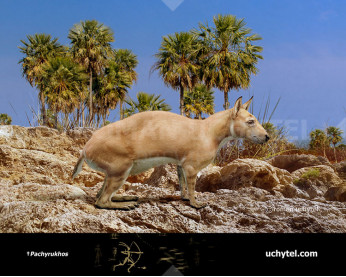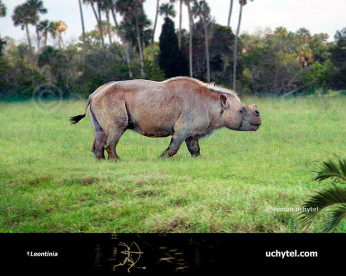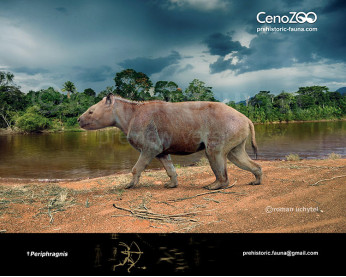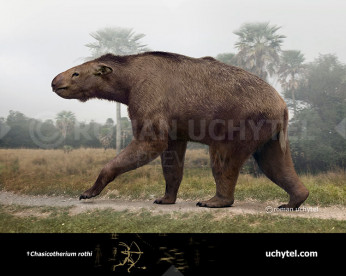Rhynchippus
2024620246Rhynchippus (†Rhynchippus (Ameghino 1897))
Order: Notoungulata
Family: †Notohippidae
Temporal range: during the late Oligocene (South America, ~28.4–23.03 Ma)
Dimensions: length - 1 m, height - 55 сm, weight ~100 kg
Typical representative: †Rhynchippus equinus Ameghino 1897
Rhynchippus is an extinct genus of notoungulate mammals from the Late Oligocene of South America. Fossils of Rhynchippus have been found in the Sarmiento Formation in the Golfo San Jorge Basin in central Patagonia, with other finds from the Petaca Formation of the Subandean Belt in Bolivia, the Salla Formation from the same country, the Moquegua Formation of the Moquegua Basin in southern Peru, the Agua de la Piedra Formation of the Neuquén Basin in Argentina, and the Tremembé Formation of the Taubaté Basin in eastern Brazil.
The animal was about 1 metre in length and weighed up to 120 kilograms, with a deep body and three clawed toes on each foot. Although its teeth were extremely similar to those of horses or rhinos, Rhynchippus was actually a relative of Toxodon, having developed teeth suitable for grazing through convergent evolution.
Rhynchippus (†Rhynchippus (Ameghino 1897))
Order: Notoungulata
Family: †Notohippidae
Temporal range: during the late Oligocene (South America, ~28.4–23.03 Ma)
Dimensions: length - 1 m, height - 55 сm, weight ~100 kg
Typical representative: †Rhynchippus equinus Ameghino 1897
Rhynchippus is an extinct genus of notoungulate mammals from the Late Oligocene of South America. Fossils of Rhynchippus have been found in the Sarmiento Formation in the Golfo San Jorge Basin in central Patagonia, with other finds from the Petaca Formation of the Subandean Belt in Bolivia, the Salla Formation from the same country, the Moquegua Formation of the Moquegua Basin in southern Peru, the Agua de la Piedra Formation of the Neuquén Basin in Argentina, and the Tremembé Formation of the Taubaté Basin in eastern Brazil.
The animal was about 1 metre in length and weighed up to 120 kilograms, with a deep body and three clawed toes on each foot. Although its teeth were extremely similar to those of horses or rhinos, Rhynchippus was actually a relative of Toxodon, having developed teeth suitable for grazing through convergent evolution.

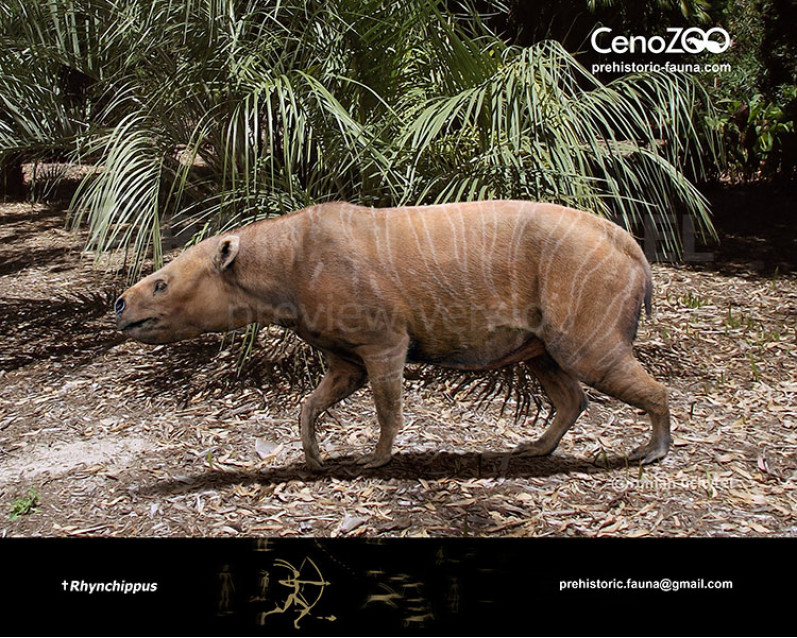
-797x638.jpg)

-70x56.jpg)
